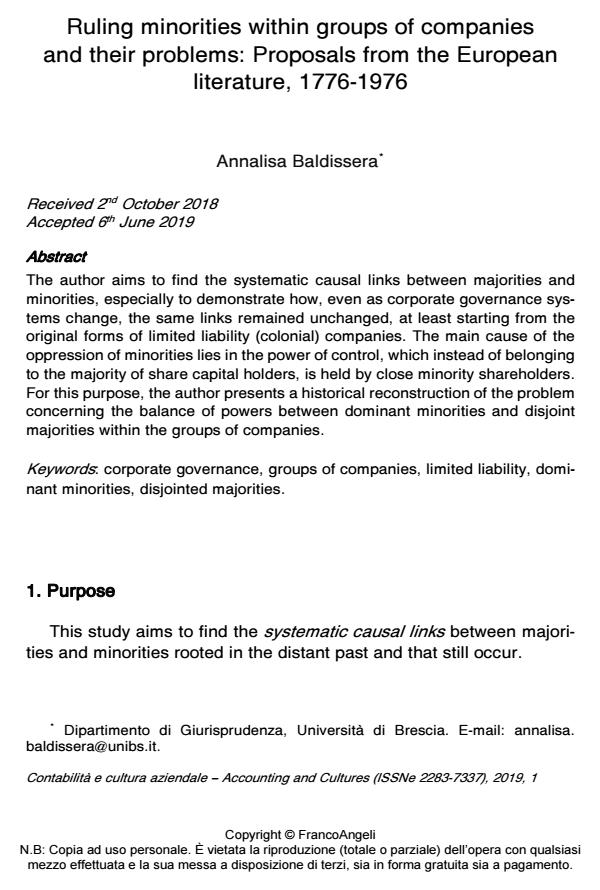Ruling minorities within groups of companies and their problems: Proposals from the European literature, 1776-1976
Titolo Rivista CONTABILITÀ E CULTURA AZIENDALE
Autori/Curatori Annalisa Baldissera
Anno di pubblicazione 2019 Fascicolo 2019/1
Lingua Inglese Numero pagine 29 P. 31-59 Dimensione file 237 KB
DOI 10.3280/CCA2019-001003
Il DOI è il codice a barre della proprietà intellettuale: per saperne di più
clicca qui
Qui sotto puoi vedere in anteprima la prima pagina di questo articolo.
Se questo articolo ti interessa, lo puoi acquistare (e scaricare in formato pdf) seguendo le facili indicazioni per acquistare il download credit. Acquista Download Credits per scaricare questo Articolo in formato PDF

FrancoAngeli è membro della Publishers International Linking Association, Inc (PILA)associazione indipendente e non profit per facilitare (attraverso i servizi tecnologici implementati da CrossRef.org) l’accesso degli studiosi ai contenuti digitali nelle pubblicazioni professionali e scientifiche
The author aims to find the systematic causal links between majorities and minor-ities, especially to demonstrate how, even as corporate governance systems change, the same links remained unchanged, at least starting from the original forms of limited liability (colonial) companies. The main cause of the oppression of minorities lies in the power of control, which instead of belonging to the major-ity of share capital holders, is held by close minority shareholders. For this pur-pose, the author presents a historical reconstruction of the problem concerning the balance of powers between dominant minorities and disjoint majorities within the groups of companies.
Parole chiave:Corporate governance, groups of companies, limited liability, dominant minorities, disjointed majorities.
Annalisa Baldissera, Ruling minorities within groups of companies and their problems: Proposals from the European literature, 1776-1976 in "CONTABILITÀ E CULTURA AZIENDALE" 1/2019, pp 31-59, DOI: 10.3280/CCA2019-001003